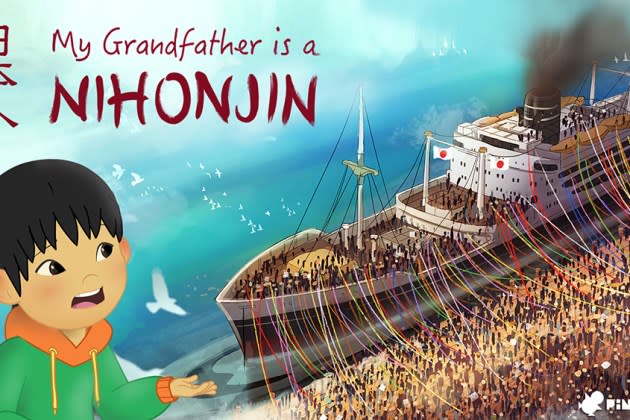Brazil’s Pinguim Content Adapts Oscar Nakasato’s Immigration Tale ‘Nihonjin,’ Pitched at Ventana Sur’s Animation!

Noburu is 10 and living in Brazil with a budding curiosity surrounding his Japanese heritage. With an inquisitive enthusiasm, he approaches his grandfather Hideo, reluctant to share tales of his difficult years assimilating to a new country. The two begin an arduous journey towards reconnection and learn critical lessons about one another in the process.
“My Grandfather is a Nihonjin” (“Meu avô é um Nihonjin”) is written by Rita Catunda, based on the popular novel by Oscar Nakasato, and directed by Celia Catunda. The animated feature incorporates Japanese culture through 2D animation that renders an intimate world of vulnerable and brave characters alongside their struggles, a narrative that broadly appeals, as immigration continues to be a way of life for many families uprooted from their country of origin.
More from Variety
'The Cuban Doctor' Director Bernard Lessa Reflects on Winning Ventana Sur Paradiso WIP Award
Latin America's Industry Debates Ways Forward Towards Gender Parity
“When I read Oscar Nakasato’s novel ‘Nihonjin,’ I was deeply moved by the story in many ways. The incredible courage of this journey, in the ‘20s, to a place as different and unknown as Brazil, and the infinite persistence and adaptability of Japanese immigrants impressed me greatly. Their transformation, over the course of three generations, in which immigrants gradually became a little more Brazilian every day,” Celia Catunda told Variety.
“As a resident of São Paulo, I’ve always had great friends who are descendants of Japanese immigrants, which has brought me very close to these stories and family relationships, with all their complexity. Furthermore, at a time when intolerance towards migration movements is so evident, we believe that the story of Hideo and Noboru could contribute a little to showing the beauty and cultural richness that arises from the process. The film celebrates diversity and the long history of immigration and exchange between Brazil and Japan without forgetting the difficulties immigrants face,” she added.
Working together to curate the film’s aesthetic and narrative proposal was a natural and collaborative affair for Celia, who noted the divergence from the book and the inspiration used to inspire the aesthetic, all fluid concepts throughout that morphed as the two worked in tandem to finalize the project.
“Rita and I worked very closely throughout the adaptation process. The book delves into stories of other family members, but we decided to focus on the relationship between Noboru and his grandfather, showing the conflicts and the transformation of both characters. From there, we started creating the storyboard, and Rita, as a screenwriter, could make adjustments to the script throughout this process,” Catunda stated.
“Regarding the art and animation style, we were inspired by the work of Oscar Oiwa, a renowned Brazilian-American-Japanese painter and son of Japanese immigrants. Oscar has a unique work that will bring to the animation this mix of Brazilian and Japanese cultures. We hope it will be a film to be contemplated and enjoyed in its smallest details, which will make children and adults thrilled with the beautiful images and with a strong story identified by all immigrant families and their descendants,” she added.
Produced by Kiko Mistrorigo and Ricardo Rozzino of Brazil’s Pinguim, the project took part in Ventana Sur pitching sessions in 2018 and participated this year within the framework of the Animation! Works in Progress strand, offering a broad look into themes of immigration, family ties, assimilation and working to preserve slices of our respective cultures.
“Traditions and culture are essential aspects of our lives, playing a significant role in shaping our identities. However, identity also does not necessarily need to be defined by a location; it can be multicultural, complex, and even contradictory. One culture doesn’t need to erase the other, they can coexist. For Noboru and Hideo the crucial realization is that they are not Japanese or Brazilian, they’re both. So, they accept and embrace both cultures as parts of their stories,” concluded Catunda.
Best of Variety
Sign up for Variety’s Newsletter. For the latest news, follow us on Facebook, Twitter, and Instagram.

